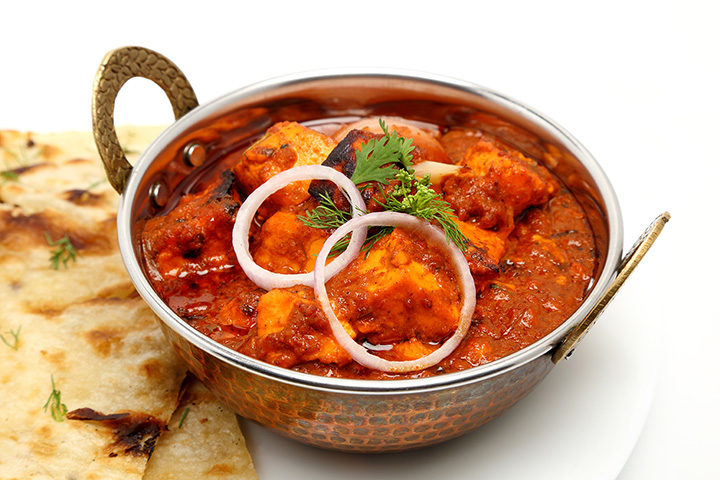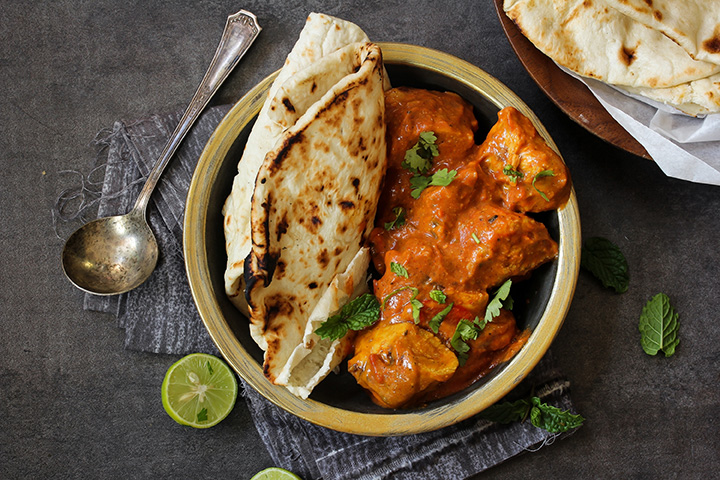
Desi food holds a special place in our hearts. The rich and diverse flavors, the spices, and the nostalgic memories associated with it make it an integral part of our culinary experiences. Whether it's a hearty plate of biryani, a mouth-watering curry, or a delicious kebab, desi food never fails to satisfy our taste buds. However, one question that often arises is whether it is safe to consume desi food the next day. In this article, we will explore the factors to consider when consuming desi food, the next day, proper storage techniques, how to reheat desi food for the best results, common misconceptions, benefits of consuming leftover desi food, tips for maintaining taste and quality, and alternative options for enjoying desi food the next day.

The importance of consuming fresh food
Freshness is key when it comes to desi food. The flavors and textures are at their peak when the food is freshly prepared. Consuming food right after it is cooked ensures that you experience the true essence of desi cuisine. The ingredients are at their freshest, the spices are well-balanced, and the overall taste is unmatched. Freshly cooked desi food not only satisfies our taste buds but also provides us with important nutrients and energy. It is important to note that the longer the food is stored, the more its quality and taste may deteriorate. Therefore, consuming desi food the next day requires careful consideration.
Factors to consider when consuming desi food the next day
When deciding whether to consume desi food the next day, there are several factors to consider. Firstly, you need to assess the type of food. Some dishes, such as curries and stews, tend to fare better when stored and consumed the next day as the flavors have more time to meld together. On the other hand, crispy and fried items like pakoras or samosas might lose their crunchiness and become soggy when stored for longer periods. Additionally, the ingredients used in the dish play a crucial role. If the ingredients are perishable or have a shorter shelf life, it is advisable to consume the food as soon as possible. Lastly, personal preference and tolerance for leftover food also come into play. Some individuals may have a lower tolerance for consuming leftover food, while others may have no issues.
Proper storage techniques for desi food
To ensure the safety and quality of desi food when consuming it the next day, proper storage techniques are essential. The first step is to let the food cool down to room temperature before storing it. This helps prevent the growth of bacteria and maintains the taste and texture of the food. Once cooled, transfer the food into airtight containers or wrap it tightly with plastic wrap to prevent any exposure to air. Make sure to label the containers with the date of preparation to keep track of how long the food has been stored. It is also important to store the food in the refrigerator at a temperature below 40°F (4°C) to inhibit bacterial growth. Avoid storing desi food in the refrigerator door as it is subjected to temperature fluctuations. Instead, place it on a shelf towards the back, where the temperature is more consistent.
How to reheat desi food for best results
When it comes to reheating desi food, it is crucial to do it properly to ensure both safety and taste. The best method for reheating desi food is to use the stovetop or the oven. These methods allow for even heating and help retain the flavors and textures of the food. Simply transfer the food from the refrigerator to a saucepan or a baking dish and heat it over low to medium heat, stirring occasionally. This gentle reheating process ensures that the food is heated evenly without becoming dry or losing its taste. Avoid reheating desi food in the microwave as it can cause the food to become rubbery or unevenly heated. If using a microwave is the only option, make sure to cover the food with a microwave-safe lid or wrap it with a damp paper towel to retain moisture.
Common misconceptions about consuming desi food the next day
There are several misconceptions surrounding consuming desi food the next day. One common belief is that reheating desi food makes it unhealthy. While it is true that some nutrients may be lost during the reheating process, the overall nutritional value of the food remains largely intact. Reheating desi food properly can still provide you with essential vitamins, minerals, and proteins. Another misconception is that consuming leftover desi food can lead to food poisoning. While it is important to handle and store leftover food properly to prevent bacterial growth, if stored and reheated correctly, leftover desi food can be safe to consume. It is important to use your judgment and rely on your senses when deciding whether to consume leftover desi food. If the food smells off, has an unusual texture, or tastes different, it is best to discard it.
Benefits of consuming leftover desi food
Consuming leftover desi food can have its benefits. One of the main advantages is saving time and effort in the kitchen. By cooking larger portions and storing leftovers, you can avoid the need to prepare a fresh meal every day. This is especially helpful for busy individuals or families who have limited time for cooking. Additionally, some desi dishes tend to develop richer flavors when they are allowed to sit overnight. The spices have more time to infuse into the food, resulting in a more complex and delicious taste. Leftover desi food can also be a great option for meal prepping. You can portion out the leftovers into individual containers and have them readily available for quick and convenient meals throughout the week.
Tips for maintaining the taste and quality of desi food when consuming it the next day
To maintain the taste and quality of desi food when consuming it the next day, there are some simple tips to follow. Firstly, avoid overcooking the food initially. Cooking the food until it is just done will help prevent it from becoming too soft or mushy when reheated. Secondly, add a splash of water or broth when reheating desi food to prevent it from drying out. This will help retain the moisture and flavors of the dish. Additionally, consider adding a fresh garnish or a squeeze of lemon juice before serving to brighten up the flavors. Lastly, if you have a large quantity of leftover desi food, consider freezing a portion for later consumption. Freezing can help preserve the taste and quality of the food for an extended period.
Alternative options for consuming desi food the next day
If you prefer not to consume leftover desi food the next day, there are alternative options to consider. One option is to repurpose the leftovers into a new dish. For example, leftover curry can be used as a filling for stuffed parathas or as a topping for naan bread. This allows you to transform the leftovers into a completely new meal, giving them a fresh twist. Another option is to share the leftovers with family, friends, or neighbors. Desi food is often enjoyed when shared with loved ones, and sharing the leftovers can bring joy to others while ensuring the food is not wasted. Alternatively, you can donate the leftovers to local shelters or food banks to help those in need.
Conclusion: Enjoying desi food while ensuring safety and taste
In conclusion, consuming desi food the next day is indeed possible, if proper considerations are taken into account. Freshly prepared desi food provides the best taste and quality, but with proper storage techniques and careful reheating, leftover desi food can still be enjoyed safely and deliciously. By following the tips and guidelines mentioned in this article, you can ensure that your home-made desi food remains flavorful and safe to consume even when enjoyed the next day. So go ahead, savor the flavors of desi cuisine, and make the most of your culinary creations!